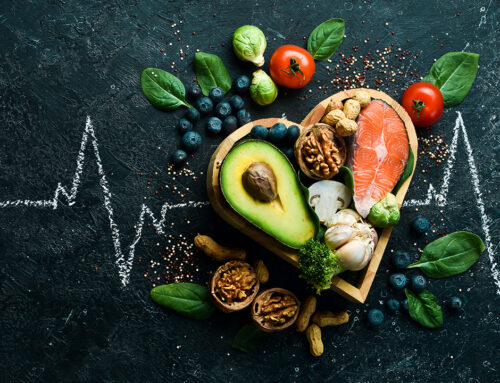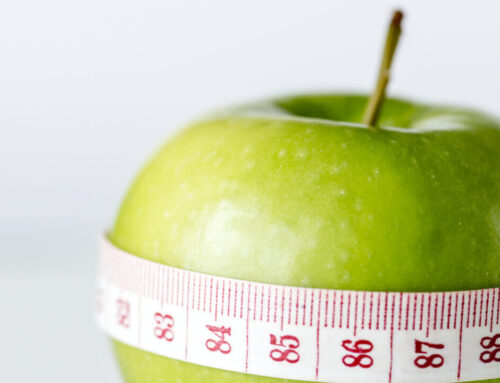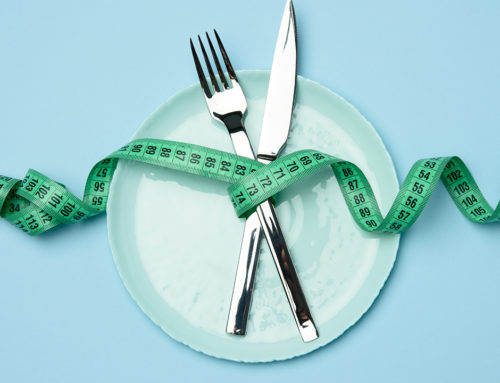It’s common sense, bad fats lead to bad health but what we don’t often hear too much about is how fat can positively influence your fitness goals. It’s the macronutrient with arguably the most question marks surrounding it. How much fat should you cut from your diet if you’re trying to cut body fat? Is keto best? How is a high or low-fat diet going to impact your performance in the gym if you’re looking to gain more muscle faster? To help you understand the answers, what follows is a comprehensive list of the basics of what you need to know about dietary fat in general, then how to use it to get goal specific.
The Essentials Of Fat
Fat is a non-negotiable factor in a healthy diet and should make up at least 20% of your total calories (for most people) to avoid serious health concerns. Beyond that, “essential fatty acids” are needed in your diet because these compounds cannot be synthesized. This means you lack the needed enzymes required to produce them. These essential fatty acids are omega-3 and omega-6. Omega-3 concentrations in your diet must be maintained in higher amounts to help prevent metabolic syndrome, which is a collection of conditions that can lead to heart disease, stroke, and Type 2 diabetes.
The healthiest sources of omega-3 fatty acids are chia seeds, firm tofu, flaxseeds (ground and oil form,) walnuts (whole and oil form.)
The healthiest sources of omega-6 fatty acids are, Brazil nuts, pecans, pine nuts, sesame oil, sunflower seeds (whole and oil form.)
However, in Western societies, our consumption of omega-3 compared to omega-6 is far from ideal. We consume unhealthy sources of omega-6 in the form of processed seed oils, grains, and grain-fed animal products, eaving the ratio at around a 10:1 omega-6 to 3. But by leaning on the listed healthier sources of omega-3s plus wild caught fatty fish and grass-fed beef and dairy, you can achieve a ratio closer to the ideal 1:1.
Monounsaturated fatty acids (MUFA) are also incredibly helpful for health as well as body fat composition. Multiple studies show that simply having a higher ratio of MUFAs in one’s diet will not only improve overall health, but also improve the state of your waistline. Even when calorie intake is unchanged or at the same amount as other diets studied, those with high MUFA intake saw body fat loss.
The healthiest sources of MUFAs are almonds, avocados, cashews, olives (whole and oil form,) peanuts, pistachios, pumpkin seeds, sunflower seeds.
Cautionary Tales
We all know that the absolute worst fats to include in your diet are trans fats. Though these are naturally occurring, specifically in meat and milk products, they should be strictly limited as part of a heart-healthy diet. They are particularly harmful when in combination with man-made fats, a process called hydrogenation. Trans fats wreck cholesterol levels, and for body composition improvement, we do want healthy cholesterol in high amounts in our blood stream for the sake of hormone production. In the most simplistic explanation, cholesterol is the precursor to hormones such as progesterone, androgens, and estrogens among others that when in healthy ratios fuel improvements in body composition.
Similarly, some saturated fats are another form to closely watch in your diet. There are saturated fats, like palmitate, which can be found in animal products that cause insulin resistance. However, there are important saturated fats like oleate which can be found in plant sources that improve insulin sensitivity. Should you cut all animal products to speed up muscle growth and fat loss? Sure, but if you want to because it’s not required for best results for most people so long as healthy plant fat sources remain in heavy rotation. However, if you want to go the extra mile for the sake of your heart health, keep your total grams of saturated fats below 6% of your total calories for the day. On a 2,000 calorie a day diet, that’s 13g or less. Many online food trackers will show you your saturated fat intake. Most people commonly remember that the unhealthiest fats are solid at room temperature, such as fats from animals, and processed fats like shortening and margarine. This hitch in that advice is that coconut oil can also be solid at room temp, so understanding the source origin makes the difference.
Another key thing to note about coconut oil, is to pay attention to the amount of processing it goes through before you consume it. For the sake of cholesterol levels specifically, you want to consume coconut oil that has the greatest amount of medium length triglycerides (MCTs) because they bypass the lymphatic system and go right to the liver for energy production. Reach for expeller pressed, unrefined, or virgin coconut oil.
Adding Healthy Fats
What about supplementation to improve healthy fat ratios in our diet? That depends mostly on what your preferred food choices are. If you’re relatively healthy and most of your fat comes from the healthiest plant food sources, you might not need consistent additional supplementation to balance your ratios of fat sources. But for those who don’t lean as heavily on whole food healthy fats on a daily basis and want to more quickly improve body composition, supplementation can be very valuable. Especially for those with thyroid issues (hypo and hyper) as omega-3 supplementation will improve hormone balance, specifically for thyroid health.
Omega-3s are a mix compound of ALA, DHA, and EPA. ALA is converted to EPA, which is converted to DHA. And though plant-based sources are high in ALAs, our body doesn’t easily convert it to the sub forms. The body more easily gets EPA and DHA from marine animals and algae. Fish oil is the most commonly known supplement for omega-3s. But it’s the algae that the fish eat that gives them that richness of EPA and DHA. So, for those who do rely on plant sources exclusively, vegan omega-3s (based in algae) are very important for supplementation. When it comes to being observant of your food quality, the lower on the food chain you can eat the better, with regards to the toxin load these higher chain fish contain. Herring and mackerel are lower on the food chain and will absorb fewer environmental toxins. Krill oil or algae oil are much safer. Cod liver should be avoided.
Fats For Fat Loss
Conjugated linoleic acids (CLA) are commonly promoted for fat-loss assistance. And with good reason. Even when tested on postmenopausal women, compared to those in the study group given olive oil, CLA supplementation resulted in less body fat mass and even less lower body fat mass after 16 weeks.
Fat loss in the body can be a slow process, relying on healthy fat sources not only in speeding up the release and conversion of stored fat to energy but reducing the other health complications that come from having too much fat in the blood stream. These free fatty acids lead to inflammation and oxidative stress, meaning, health complications and potentially slower results. The more fat you have in your blood stream, the greater the challenge for the body to clear out and use blood sugars which is the basis of insulin sensitivity. Insulin is the key that opens the door for sugar in the blood to be taken into the tissue where it will be used for energy. The more fat within the muscle, the slower that lock and key system works. As adults, the number of fat cells in our body remains stagnant. Whether you’re lean with a small amount of fat in those cells, or you’re obese with a significantly greater amount of fat in those cells. However, there’s a limit to what each fat cell can hold. At some point, there’s what’s called the “spillover effect” where fat overflows the cells and circulates back into the blood stream leading to insulin resistance and type 2 diabetes. A lean person on an especially high fat diet can have just as much free-floating fat in their blood as someone experiencing the spillover effect.
So how do those healthy fats improve body composition? Flavonoid phytonutrients found in nuts increase thermogenesis and fat oxidation. In fact, many research studies have found that those consuming a calorie surplus from nuts by comparison to their regular diet saw either minimal weight gain over months or even fat loss. And thankfully, nut butters prove to have the same effect. Peanut butter addicts, rejoice! One interesting study compared the satiety levels of people consuming almost identical fruit and fat smoothies. First, the group had walnuts in their smoothie. Then, without being informed, their smoothie was altered to have walnut flavoring and safflower oil to allow the smoothies to taste exactly the same. Realistically, we might attribute fat loss by adding nuts to the diet to the fiber content, or the additional volume of food or calorie content to provide that satiety. But what they ended up discovering is once those smoothies were switched out, after day one of the study, by day four the research group found that the participants noticed a drop in satiety levels with the placebo smoothie. This means fat from nuts keeps you fuller for longer.
Does that then mean that very low carb diets like keto are the best approach for rapid fat loss, especially for obese individuals? Not according to research. In fact, metabolic disadvantage was demonstrated by those doing a particular study, a study which aimed to prove the superiority of keto diets. What they found was the rapid results of scale weight loss were misleading. Though the low-carb group saw more overall pounds come off, a significant amount of it was lean weight, water and protein loss. Further studies show that while yes, there’s a rise in fat oxidation, that doesn’t equate to fat mass reduction. Especially when there is a consistent intake of dietary fats. And due to the fact that healthy plant fats often accompany more carbs, they aren’t favored in most keto diets.
Fat Tweaking
What’s even more interesting is that your body has fat-burning fat cells, known as brown fat. In contrast, most of your body fat is made up of white fat cells, found in connective tissue, beneath the skin, and in the abdominal cavity. But brown fat is found mostly in the posterior upper back and neck and can be found in other areas too. These fat cells aid in thermogenesis. White cells convert excess glucose from our food into triglycerides that signal satiety and energy balance. White fat cells can transform and take on characteristics of brown fat cells, making them beige or sometimes called “brite” for brown and white. This change happens under various cues by the body such as prolonged very low temperatures (notably weeks of 2-hour exposure to temperatures just above the shivering point), increase of dietary flavonoids, and exercise. Brown fat cells are ideal as well because of their impact on increasing insulin sensitivity.
For those looking to increase lean mass, specifically “lean bulking”, knowing how to use fats the right way can definitely improve your muscle gain progress. Again, insulin sensitivity is vital for muscle growth. This is why many people choose to have low-fat pre and post-workout meals. Minimizing the amount of fat in the blood stream helps shuttle more glucose into the muscle tissue to power heavier lifts and recover more quickly post workout. More research on keto diets have proven their ability to impair the effects of exercise for athletes and non-athlete exercisers. They notice a decrease in strength and increase in perceived effort in their training. Beyond that, comparing two groups of people doing the same strength training plan, the group on the keto diet actually lost muscle, while those on a non keto diet gained in this short 8-week study.
Since fats digest and break down more slowly, it’s a great idea to blunt the catabolic effect of your overnight fast by having some fats before bed.
In terms of improving insulin sensitivity, which is needed for any health or body composition goal, plant-based diets have proved to be incredibly effective. But does eating plant-based mean going strictly vegan? Absolutely doesn’t have to be. Thanks to the prevalence of processed junk foods in our society, one doesn’t even have to be a wholefood, plant-based vegan. Being plant-based means that one’s diet is heavily reliant on plant foods. There are plant-based proteins (such as legumes and soy), plant-based fats (like avocado and nuts), and plant-based carb sources. Animal fats aren’t all horrible either. For example, eggs, though high in saturated fat, roughly 39%, but 43% of the fat is monounsaturated and 4% polyunsaturated. Poly- like MUFAs are another healthy fat source.
The Bottom Line
But even if you do prefer a keto or Paleo approach, adding more wholefood plants to your daily life intake drastically reduces inflammation markers, and elevates circulations of fat-burning enzymes. To eat plant based, really just means to eat more plants as the foundation of your diet regardless of whether you eat animal products multiple times a day, a few times a month, or eat a 100% vegan diet. Plant-based fats improve body composition, especially with regard to reducing body fat and blunting fat gain, even in a hyper-caloric state. Since research has shown that those who eat vegan diets have less fat within the muscle tissue (compared to omnivores of the same weight) it may be beneficial for many people to even incorporate days in their week when they eat strictly vegan. This can be more easily done on days when your protein intake may be lower, such as a rest day.
So, what’s the best plan for your goals? The answer is whichever diet (within reason) makes you feel the best. There are people who either by running tests or just personal experimentation find some diets make them feel worse, even worsening pre-existing health conditions. Vegan or vegetarian diets just won’t work for some people. That could be due to particular dietary requirements or personal preference. You shouldn’t have to eat a long-term diet style you hate just for the sake of your goals. Just as too little fat in a diet can cause hormone and brain health problems, too much dietary fat can harm the health of many people, especially those with severe heart conditions. The best diet is the one that works for you from a health and aesthetic perspective.







